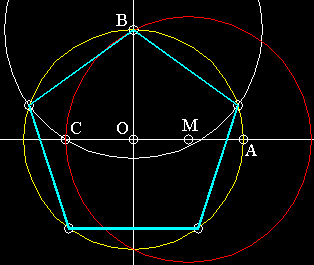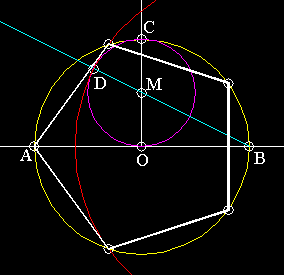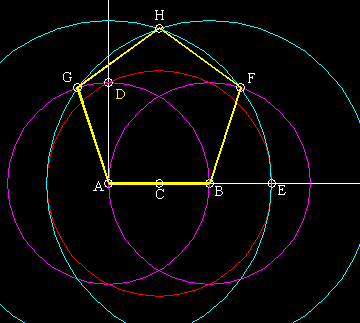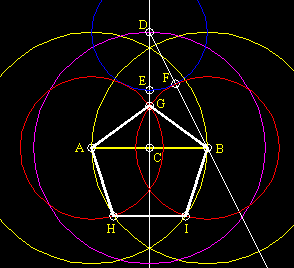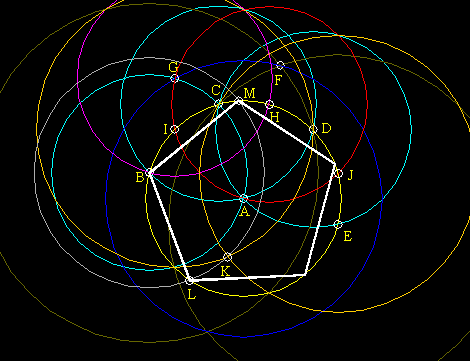This next construction is an odd one. The first segment has nothing to do with the outcome of the pengtagon!
- First, draw segment AB and find M, the midpoint of AB.
- Draw a circle at M (purple) with radius AB.
- Draw a perpendicular line at M. This line intersects circle M (purple), at points C and D.
- Draw a circle at C, with radius CA (yellow). Draw a line through points CA (red).
- Draw a circle at A with radius AM. This circle intersects AC at E.
- Draw a circle at C with radius CD (blue).
- Draw a line perpendicular to AC. This line intersects the large circle C (blue) at points
F and G.
- Connect points FC and GC with a line. Both lines intersect the small circle C (yellow), at points
H and I. A,H,I are points of the pentagon. You can use them to find the others.
|

|
